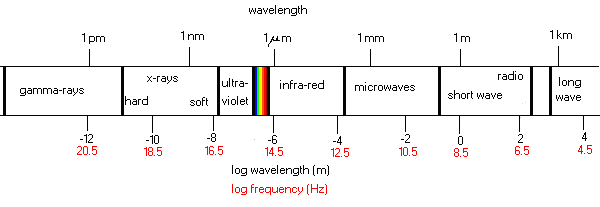| Author | Message | ||||||||||||||
M1combat  |
Someone asked a while back what they should coat an engine block in for the best heat dissipation. Someone mentioned that black dissipates heat faster than any color... I didn't think that sounded right, so I've been asking around. "Some of this information is not accurate, so let's do a little heat transfer class here: True, convective heat transfer will increase with more airflow (in general, not always) and more surface area (in general, but not always - recently I redesigned a heat sink for a customer and by reducing the number of fins by 40% we increased heat transfer by over 100%; you have to watch what the airflow is doing). For radiant heat transfer, first you have to ask how the heat that's being dissipated is generated. If it's self generated, then yes, you want to maximize your emissivity; if you are sitting in sunlight and want to want to minimize the temperature increase and the sun is your heat load, then the ratio of visible light absorbtivity to infrared emissivity is key. That's why the painted components in space use a special white paint to make this a favorable ratio. In 1994 a payload I helped design (SAMPIE) flew aboard STS-62. Part of the instrumentation was a gold plated sphere for certain plasma measurements. Now the surface of that sphere had a very low absorbtivity - only 3% - but the emissivity was even lower, only 2%. The sphere would rapidly heat from sunlight under those parameters. We ended up living with the temperature increase because the exposed period to sunlight was only 40 min. You would find copper coating an engine block would probably give you an unfavorable ratio, if it's going to be in the sun much. Even though you're self generating heat, it's still a poor emitter, and you're going to pull in visible light heating. It's a common fallacy that black paint will give you the best radiative emitter. You don't usually emit thermal radiation in the visible light spectrum; you emit in the long infrared wavelengths. What matters is what color is the object in the infrared spectrum? If it's black in visible, it might only be grey in IR. The only time the visible spectrum color makes any difference is in extremely high temperatures where the object actually loses energy by emitting visible light. You know, like white-hot steel. Not your typical thermal application. So what you do coat an object with for emitting? Paint works well. NASA tested Krylon and made an entire graph of the radiation spectrum for that paint, and it's around .95 emissivity. You can buy grey Krylon paint and get this emissivity. If you take the same part, out of aluminum, and put a black anodize on it, you'll only get around .85, even though it's black. As I said, what matters is what color is it to IR, not visible. Aluminum foils, as mentioned above, are used for radiation heat shields in many applications. You use them to interrupt radiation to either keep something hot or keep something cool. The "heat shields" on catalytic converters are just radiation heat shields. Many space payloads use a "radiation blanket" which is 25 to 50 alternating layers of mylar or kapton and aluminum foil, and it serves to regulate the temperatures in the payload from heating too much on the sunny side or cooling too much on the dark side. They also make great capacitors if you forget to ground all the layers Your best choice for an engine, sitting in the sun? White paint. Not practical, but the best thermal management choice. --Jim" I'll ask him now if no coating with a natural aluminum finish would be even better. | ||||||||||||||
Glitch  |
Your best choice for an engine, sitting in the sun? But why is your bike sitting in the sun? Shouldn't you be more worried about how well a running engine, being driven, disapates heat. I agree with what you said above, but I think the application is in question. Your engine while in your bike, while you're riding it, won't need to be shielded from the sun. The heat from the engine is being generated from the inside, and is greater than the heat generated from the sun, unless of course the engine is just sitting in the sun. Again as I said before, I could be wrong. I just don't see how a light colored engine, while running, and while riding, would have any benefit. | ||||||||||||||
Blake |
What Glitch said. I agree with everything in Jim's explanation except the recommendation to use white paint and the whole idea that solar heating is a major factor needing consideration above other factors. When considering engine coating wrt heat dissipation one would FIRST need to consider conduction and radiative emissivity. If the paint/coating acts as an insulator wrt conduction of heat from engine to ambient air, it could easily hamper heat transfer of combustion generated heat, and that would be bad. Things like coating thickness also come into play. With respect to the shedding of combustion heat, what you want in an external engine coating is maximum heat conductivity and IR emissivity with minimum thickness. Of course durability and aesthetics might be something to consider too.  | ||||||||||||||
Steveford  |
WWW.KGCOATINGS.COM should be of help. | ||||||||||||||
M1combat  |
I agree... The issue was whether or not black coating would be better than white... Or whether any coating at all would be better than no coating. Specifically a black "krinkle coat" like you see on HD's. I don't think that is the best way to go. Personally, I feel that the natural finish is the best way to go, but the person that started the previous thread wanted to coat the engine. I can't see how that can be a good thing unless it's a very thin coat of white or maybe grey if you can't stand the white. I think his point about "solar" heating as such was just that if there indeed "needs" to be a coating, it should be white. Not black. It makes perfect sense to me (keeping in mind that I don't work in the thermodynamics field) that a color that will absorb heat from the sun would be less effective at "allowing" heat to dissipate from an internal source due to the fact that the black coating itself will always be a few degrees higher than a white coating. Again... I feel that no coating would be best (when we're talking about a "paint" type coating anyway, which was the subject of the original thread). I think that just about the worst thing you could do is a "thick, black krinkle coat". The conduction of that stuff can't be that good... Or at least would seem to be less than the natural aluminum finish. | ||||||||||||||
Blake |
Again, white coating in order to prevent absorption of solar heat makes no sense to me. And your assumptions are wrong and in fact contradict what Jim stated in his discussion. Emissivity and absorptivity are two separate characteristics. Emissivity as we are concerned with it is entirely for the IR (infrared) spectrum where absorptivity applies for both visible and IR energy. A white paint could easily have extremely poor emissivity thus seriously compromising the ability of the engine to shed heat via radiation. A coating that significantly increases emissivity without compromising conductive or convective heat transfer would be a great thing for the engine. I betcha that all the HD/Buell coatings provide good heat shedding characteristics for all three modes, radiation, convection, and conduction. It could well be that the krinkle coat black by providing increased surface area and turbulence in airflow actually improves the heat shedding performance of the engine. It makes NO sense to me to coat the engine with white paint in order to minimize the absortion of solar heat. And there is no correlation with refelctivity of visible light to the emissivity of a coating in the IR spectrum. FYI, we are talking Heat Transfer, not Thermodynamics, two different fields entirely. Heat energy from the sun comprises both visible and infrared (IR) light. As Jim points out the absorptivity, how effectively a surface absorbs light does not necessarily indicate how well a surface will emitt IR enery/heat. A coating certainly could improve upon a natural aluminum surface's ability to shed heat. | ||||||||||||||
Blake |
It is true that in general, darker more flat/unshiny surfaces provide better emissivity. Flat black is generally a good emitter of IR energy. | ||||||||||||||
M1combat  |
Well... There's obviously something here that I'm missing  . . Take two materials (or the same material in two colors anyway)... One white, one black, both flat (not shiny). Both are at the same place on emissivity and absorptivity scales respectively. Why would the white one not end up cooling better due to the fact that it only needs to contend with conducting heat from the aluminum to the air while the other has to do that AND dissipate any heat that it might pick up from sunlight. I'm not disagreeing with you... I'm asking you to show me the light. Thanks in advance  . . | ||||||||||||||
Glitch  |
Take a flat black piece of metal and heat it from underneath, not torch it just warm it up from one side. Take another of flat white, warm it the same way. Take a pyrometer and meassure the heat from the side that's painted. I'll bet you find the black one is hotter. Do this not in the sun, so you know the sun isn't affecting the heat transfer from one side to the other. I do agree that a wrinckle coat may just insulate instead of disapate, but that would be because of the caoting used, and not the color. | ||||||||||||||
M1combat  |
Understood... But the black material will be trying to absorb heat as well as dissipate it, while the white material will be absorbing less heat while trying to dissipate the same amount of heat. Or at least that's what makes sense to little ol' me anyway... If I'm wrong, please advise. | ||||||||||||||
Vr1203  |
I think Gun kote ,in black is better in removing heat out of a running engine than bare aluminum and I'm going to try to prove it. Until then, Consider one thing aluminum ,bare is not bare .Anyone to discuss the insulating properties of aluminum oxide ? | ||||||||||||||
Glitch  |
M1, you want it to absorb heat, you can't dissipate what you don't absorb. Remember we're talking about heat transfer, not what stays cooler to the touch. If you feel heat coming off something, it's dissipating heat, if you don't you're not. | ||||||||||||||
M1combat  |
Sorry... I guess I meant absorbing less heat from the the sun. | ||||||||||||||
Glitch  |
Why are you worried about the sun? The sun isn't a factor on an engine running a motorcycle. | ||||||||||||||
M1combat  |
Why not? The sun shines on the engine in our case... You can't tell me it has NO effect. Right? I agree that it's mostly splitting hairs, but that's not the point. | ||||||||||||||
Ben_jamminvfcc |
I think some Harley engines have a black krinkle-coat paint job on them because some yuppies thought it looked pretty. Conservatively tuned cruiser engines aren't typically the hot-beds(no pun intended) of cutting edge heat dissipation theory. | ||||||||||||||
M1combat  |
" Conservatively tuned cruiser engines aren't typically the hot-beds(no pun intended) of cutting edge heat dissipation theory." That's kind of what I was thinking... Granted, you look at a lot of the higher performance bikes and a lot of their engines are painted black. Granted, they are also covered by a fairing and water cooled in most cases. | ||||||||||||||
Blake |
Be careful parking your bike in the sun, the engine may overheat.  Sounds silly, doesn't it? That's because it is. The noon-time sun at its absolute very worst in the worst possible high elevation inhabited location on Earth will exert around 1,200 W of light/heat energy upon every square meter of incident surface that is oriented perpendicularly to the rays of the sun. How much incident area does your Buell engine display to the sun? Think of the solar rays as wind and estimate the engine's silhouetted area projecting into that solar wind. At noontime on the kickstand you might end up with a tiny fraction of a square meter. Later or earlier in the day when the sun is at a lower angle and the atmosphere significantly diminishes the energy reaching your location on Earth, you might end up with a greater incident surface area, but the energy reaching that surface area is diminished. And at any one time only one side out of six (left, right, front, back, top, bottom) will likely be fully illuminated by the sun. And the engine is made of highly conductive aluminum alloy with a significant volume of heat dissipating fins located all around the cylinders and heads. Worst case, the sun and heat radiating from hot pavement might cause overall engine temperature to rise a few degrees during operation. But your concern wrt reflectivity is valid, just not wrt the sun and not wrt the visible spectrum of light. Think about the inside of the V and the headers.  No visible light worries there, but a lot of IR. No visible light worries there, but a lot of IR. Might it be a good idea to compare the emissivity and conductivity of ceramic coatings versus header wrap versus the stock stainless steel finish? We all agree, the best engine coating would be durable, aesthetically pleasing, heat-conductive, thin, a highly efficient emitter of IR energy (heat), and a poor absorber (low absorbtance) of IR energy (heat). Characteristics of the coating wrt visible light are only consequential to the aesthetics of the coating. Question for you M1: How much of the heat producing solar radiation reaching the Earth's surface is comprised of visible versus infrared radiation? What is the meaning and impact of "absorbtance", "emissivity", "radiation", "convection", "conduction". "visible radiation", and "infrared radiation" as they apply to the transfer and/or generation of heat energy? Gaining an understanding of the above will do much in helping one understand the topic of discussion. www.google.com  | ||||||||||||||
M1combat  |
Yes Blake... That sounds quite silly. It also doesn't have much to do with the question that was asked in the original thread. "How much of the heat producing solar radiation reaching the Earth's surface is comprised of visible versus infrared radiation? " I would say a small percentage. I did take Chemistry and Physics in high school. I also worked myself through one of my father's course books entitled "Applied Physics". I won't proclaim to know everything about this subject.. although I will, when I get the chance, google those terms to learn about them. "Take two materials (or the same material in two colors anyway)... One white, one black, both flat (not shiny). Both are at the same place on emissivity and absorptivity scales respectively. Why would the white one not end up cooling better due to the fact that it only needs to contend with conducting heat from the aluminum to the air while the other has to do that AND dissipate any heat that it might pick up from sunlight. " Can you answer that question for me? If I used the wrong term in a place or two, please forgive me. I think if you read it carefully you will know what I'm trying to ask. | ||||||||||||||
Blake |
Hint: "Both are at the same place on emissivity and absorptivity scales."  | ||||||||||||||
Blake |
"How much of the heat producing solar radiation reaching the Earth's surface is comprised of visible versus infrared radiation? " "I would say a small percentage." Please clarify. Are you saying that visible light comprises a small percentage of heat producing solar radiation compared to IR radiation? | ||||||||||||||
Blake |
Look up "black body radiation" while you are at it. | ||||||||||||||
M1combat  |
http://galileo.phys.virginia.edu/classes/252/black_body_radiation.html Alright.. I read that page. It certainly offered some insight. I think I mostly understood the oven thing. When the got to quanta I started remembering quite a bit from my highschool Chemistry and Physics classes (I think N. Lawler was an exemplary Science teacher). I still have a question though... Wouldn't you still want to make sure that your best "black body" material was the one on the outside? Is a Krinkle coat closer to a black body than Al? Damn, I just looked up the periodic table... I haven't done that in years. This site rocks  . . "Please clarify. Are you saying that visible light comprises a small percentage of heat producing solar radiation compared to IR radiation?"  Yes. | ||||||||||||||
Blake |
"Yes." Try again. Hint: "Heat Producing" I thought we WERE talking about the outside of the engine. At least I was talking about the outside of the engine. I would be very surprised if the emissivity of aluminum were higher than any non-glossy black paint. Okay damnit, I'll google up some numbers for you to ponder...
Pretty much any non-metalic paint will provide good IR emittance, some better than others. But I'm starting to think you may be on to something with a high IR emissivity low IR absorptivity coating/paint, especially in areas that are subject to header or cylinder head radiated heat like on the exhaust and right sides of the cylinders and heads and in the "V" between the cylinders. Check out this list of IR emittance and solar absorption for various coatings. Too bad it doesn't list IR absorptivity, which is what is of major concern. The graphic you posted above characterizes by frequency the full spectrum of electromagnetic radiation, but it does not indicate in any way the relative energy densities comprising solar radiation. Visible and IR solar radiation each comprise close to half of all heat producing solar energy with a little UV thrown in too, but it is not too far from a 50/50 split between visible light and IR. I'm speaking from memory, so if you find better info, please share it. The point is that visible light comprises half of the heat producing energy from the sun that reaches the surface of the Earth.  |